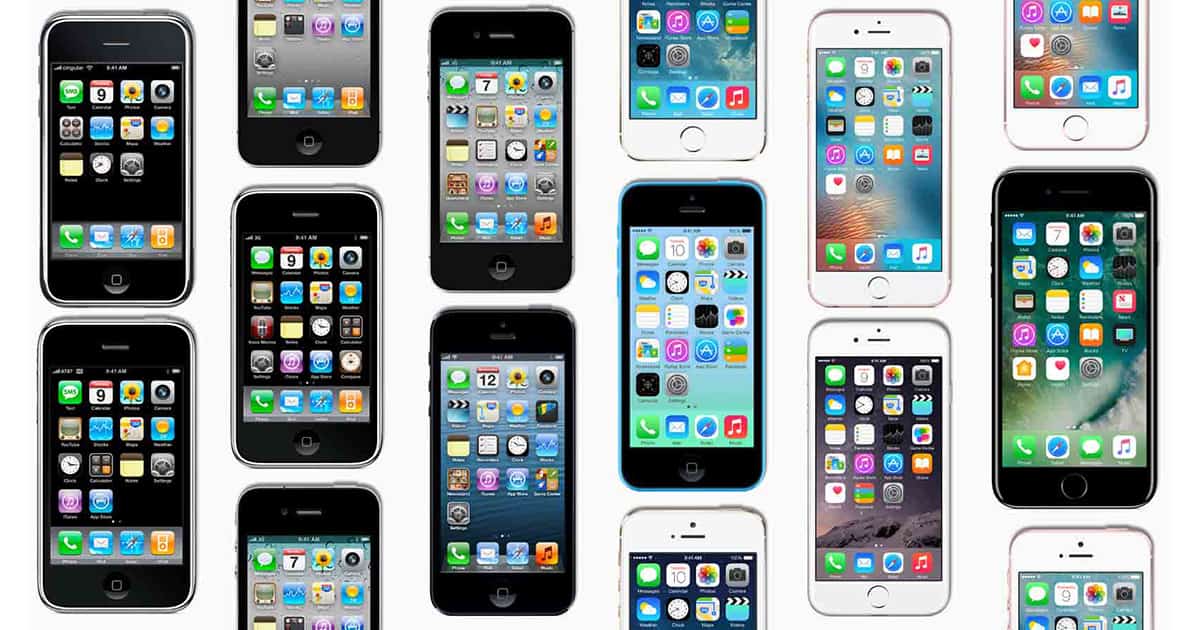10 Years in and the iPhone is Still Going Strong
Apple unveiled the original iPhone 10 years ago on January 9th, 2007, at Macworld Expo in San Francisco. Apple changed the smartphone world that day and opened the door for a future where mobile computing is the norm, and flip phones, Treos, and Blackberrys are fading memories.

10 years of iPhones from the original model to the 7 Plus
The iPhone redefined the smartphone market and dramatically changed what we expect from handheld technology. Apple’s competitors had to stop midcourse and completely rethink their product designs from form factor to interface.
Remembering the iPhone Launch
I was in the audience when Steve Jobs introduced the first iPhone during his Macworld keynote 10 years ago. A reporter from a major news network latched on to me while we were waiting in line to go in. He hadn’t ever been to Macworld expo and wanted to stick close to a veteran who could show him the ropes.
When Steve said, “An iPod, a phone, an internet mobile communicator. Do you get it?” you could feel the air sucked out of the room from the collective gasp as hundreds of people realized what we were about to see. The reporter sitting next to me said, “What just happened?” I replied, “Apple just made your Blackberry obsolete.”
That was our first glimpse at the iPhone interface, which was strikingly different from anything we had seen before. It was also the first time a smartphone was seriously seen as a device for everyone and not just business people or tech junkies.
The iPhone Doubters
Blackberry (RIM at the time), Palm, Samsung, and Nokia were big players when the iPhone was first announced. Microsoft was trying to carve out a piece of the smartphone market, too. What they all had in common was the certainty that Apple would fail.
Apple was mocked for not having a physical keyboard and dismissed for trying to jump into an established market. Microsoft CEO Steve Balmer laughed and questioned how Apple thought they could compete without the tiny chiclet keys, and Palm CEO Ed Colligan said, “PC guys are not going to just figure this out. They’re not going to just walk in.”
Microsoft has all but officially exited the smartphone market and destroyed Nokia in the process. Nokia met its demise when Microsoft bought the company in hopes of shoring up its own smartphone efforts. That fizzled out with Microsoft killing off Nokia’s flagship Lumia brand, firing hundreds of employees, and eventually selling off what was left at a hefty loss.
Palm was eventually bought by HP only to whither away and die, Blackberry looks to be in a death spiral. Samsung chose to quite successfully compete with Apple by copying the iPhone with great success, despite years of court room patent infringement battles.
Next up: The Good and the Bad
iPhone: The Good and the Bad
The original iPhone was revolutionary, but far from perfect. That, however, didn’t matter because it was cool, relatively affordable, and easy to use.
The iPhone was panned by pundits because it didn’t have a physical keyboard, a stylus, or a removable battery. They should’ve been more upset about key features that weren’t there, like the lack of printing support, or no Copy and Paste feature, or the complete lack of support for third-party apps.
The iPhone may have been lacking is some ways, but it made up for them in others, especially its unlimited data plan. The original iPhone was available only through AT&T and included unlimited monthly wireless data. It also played a role in showing us we shouldn’t be paying for individual text messages.
The iPhone built off the iPod’s success, and set up Apple to later introduce the iPad. The company eventually addressed the iPhone’s shortcomings and introduced the App Store which is now so successful it can pull in over US$240 million in a day.
Tomorrow’s iPhone
The first iPhone shipped with a3.5-inch display and a maximim storage capacity of 16GB. The current models—the iPhone 7 and iPhone 7 Plus—come with 4.7-inch and 5.5-inch Retina displays, and up to 128GB storage. They also include a built-in GPS, support for high resolution video, which weren’t even imaginable on original model.
Speaking on the 10-year anniversary of the iPhone’s introduction Apple CEO Tim Cook said, “iPhone set the standard for mobile computing in its first decade and we are just getting started. The best is yet to come.”
Thanks to Apple’s secretive nature, we’ll have to wait to see if Mr. Cook’s promise of even better iPhones is true. Regardless of what’s in store, we all owe Apple a thank you because without the iPhone none of the smartphones on the market today would exist. The original iPhone triggered big changes in the smartphone market and showed the rest of the world what a smartphone could be.
0 Response to "10 Years in and the iPhone is Still Going Strong"
Post a Comment